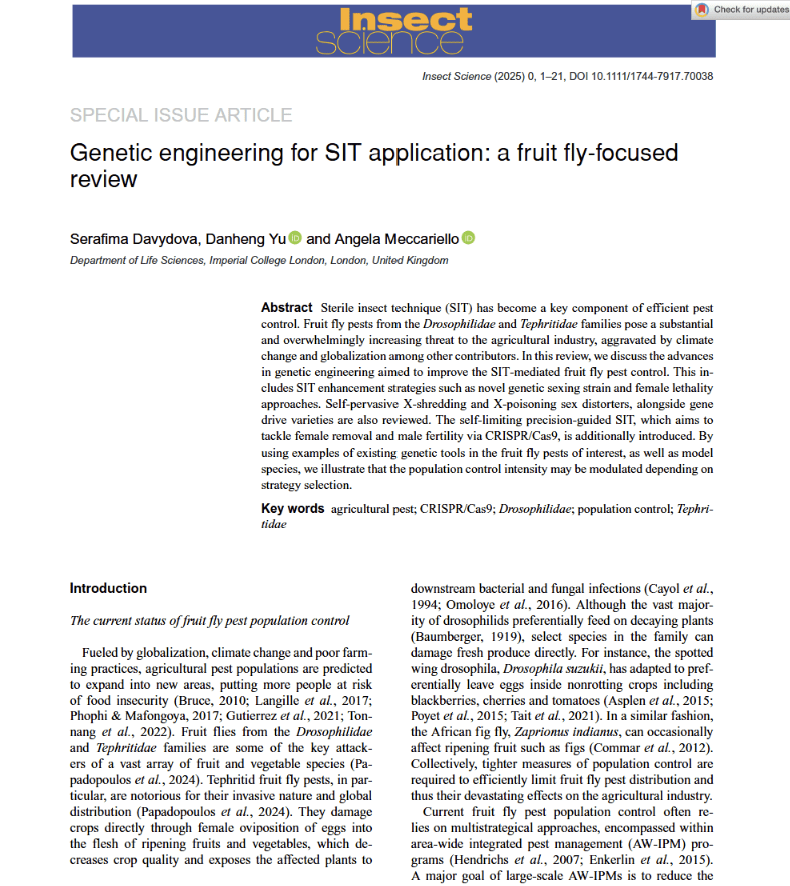
Engineering Precision: Genetic Innovation Boosts Fruit Fly SIT Efficiency
10 Apr 2025
As global agriculture comes under increasing pressure from climate change and the spread of invasive pests, scientists are racing to refine pest control strategies that are both effective and ecologically sound.
The sterile insect technique (SIT) has emerged as a powerful and environmentally friendly approach to suppressing pest populations – particularly of notorious agricultural pests such as fruit flies of the Tephritidae family. However, traditional SIT programmes, which rely heavily on irradiation and manual sex separation, face critical limitations in scalability and precision.
REACT researchers Serafima Davydova and Angela Maccariello, together with Yu Danheng, recently published a comprehensive review of the latest advances in genetic engineering in Insect Science: from fluorescent sex-sorting systems to CRISPR-based gene drives, the paper highlights a new era of SIT enhancement technologies that promise increased efficiency, specificity and adaptability.
Key Innovations from the Study
- CRISPR/Cas9-based pgSIT systems allow the creation of males that are both sterile and genetically equipped to eliminate females. In model experiments with Drosophila suzukii, this method led to complete population suppression within a few generations – without irradiation.
- The SEPARATOR system using sex-specific splicing of fluorescent markers enables early-stage, high-throughput sex sorting. This is a potential game-changer for SIT programs lacking robust Y-linked sexing strains.
- The integration of tetracycline-repressible lethal genes offers a way to eliminate female progeny early in development, significantly improving rearing efficiency and reducing crop damage.
- Self-propagating genetic constructs like X-shredders and homing endonucleases are being tested to bias population sex ratios or suppress populations through inheritance distortion. Though promising, these tools come with ethical and ecological considerations.
The innovations presented by Davydova and colleagues have the potential to reshape the landscape of pest management. By increasing the accuracy, speed, and cost-effectiveness of SIT, these approaches open the door to broader, more sustainable application to pest species that threaten food systems worldwide.
Hear from the Researcher Herself
In this interview, PhD researcher Serafima Davydova discusses her work on genetic sexing strains in the Mediterranean fruit fly and its link to REACT’s mission. Her research spans CRISPR toolkits and sex conversion breakthroughs, laying the foundation for next-gen SIT. REACT uses such innovations to develop scalable, sustainable pest control with input from farmers and regulators.
Access the full article on Zenodo
To explore the full review and the technologies shaping the future of SIT, access the paper via the Insect Science Journal:
Lorem ipsum dolor sit amet, consectetur adipiscing elit. Ut elit tellus, luctus nec ullamcorper mattis, pulvinar dapibus leo.
